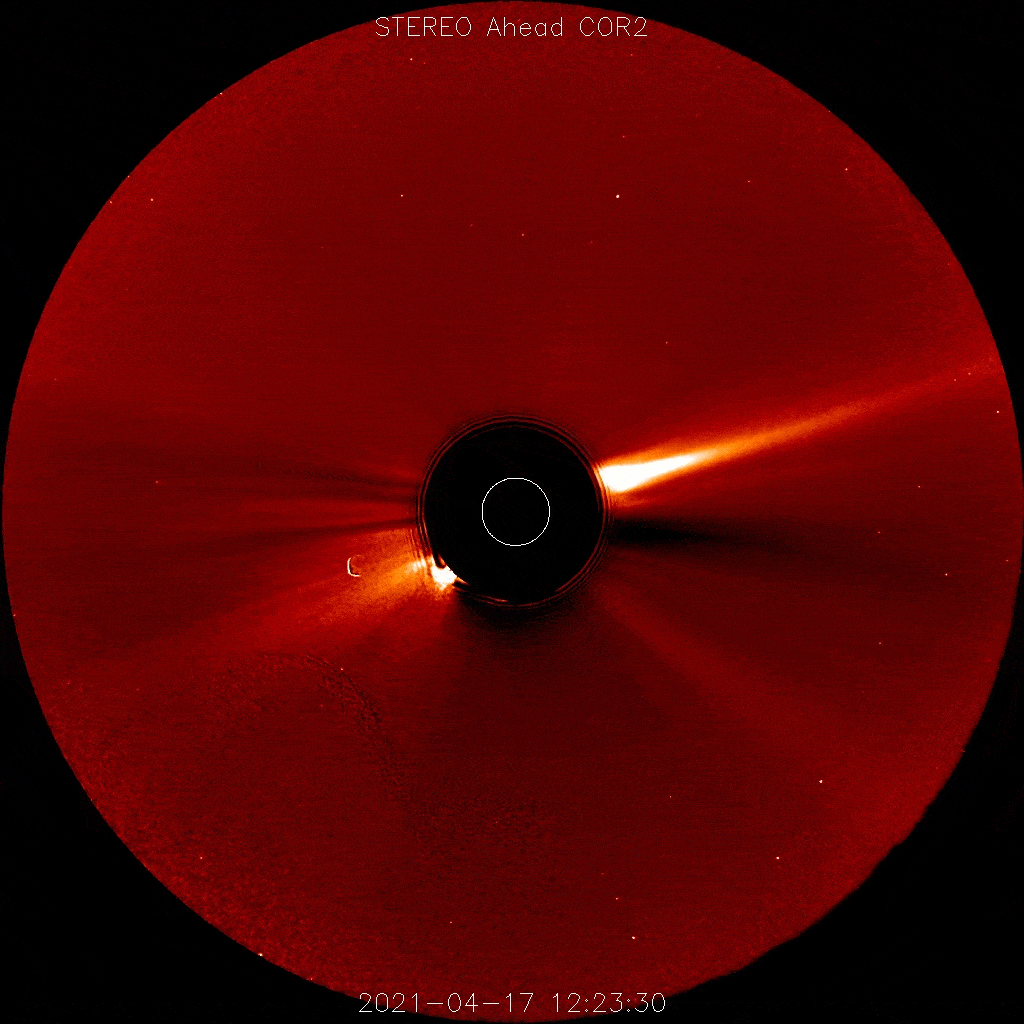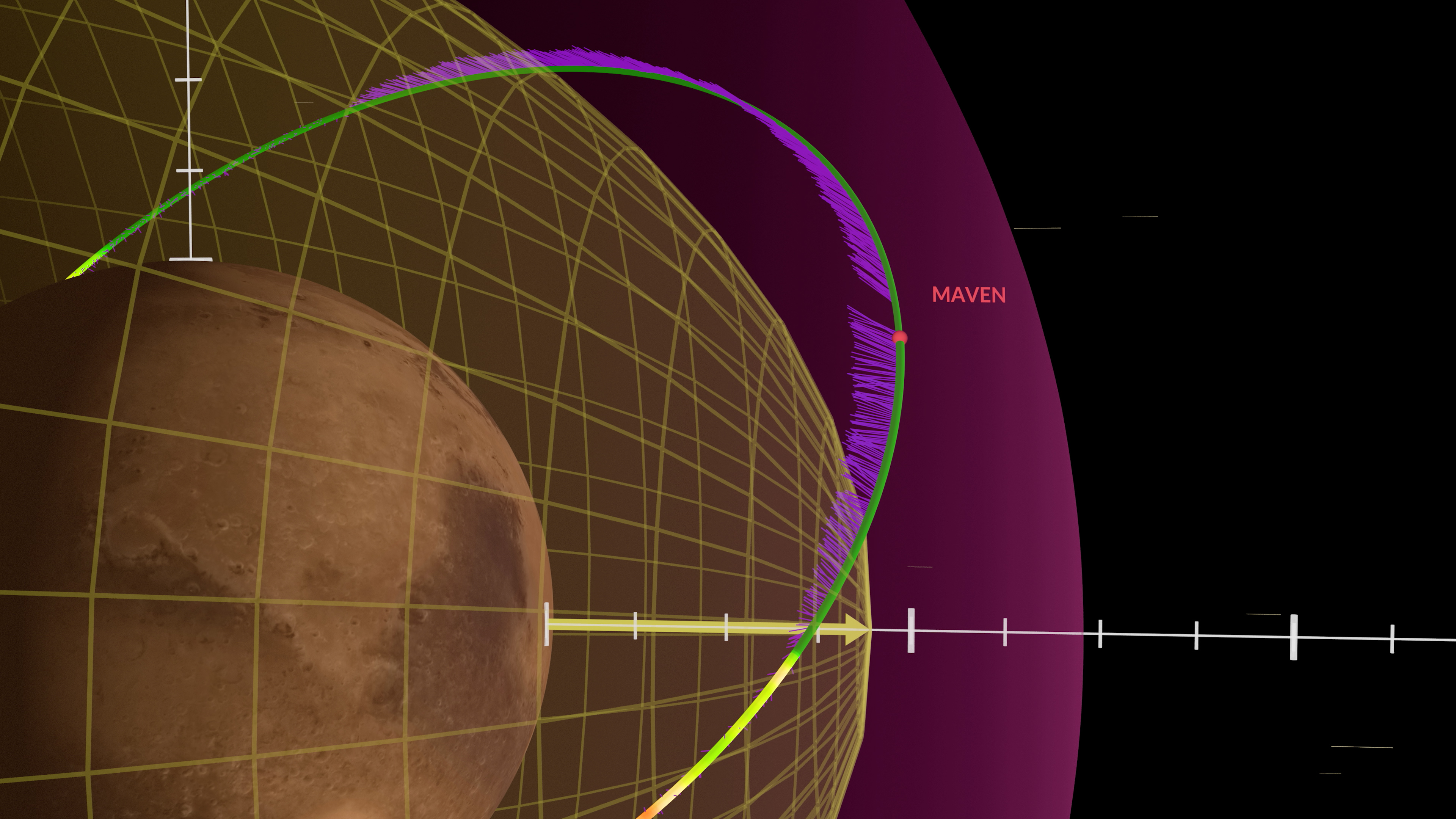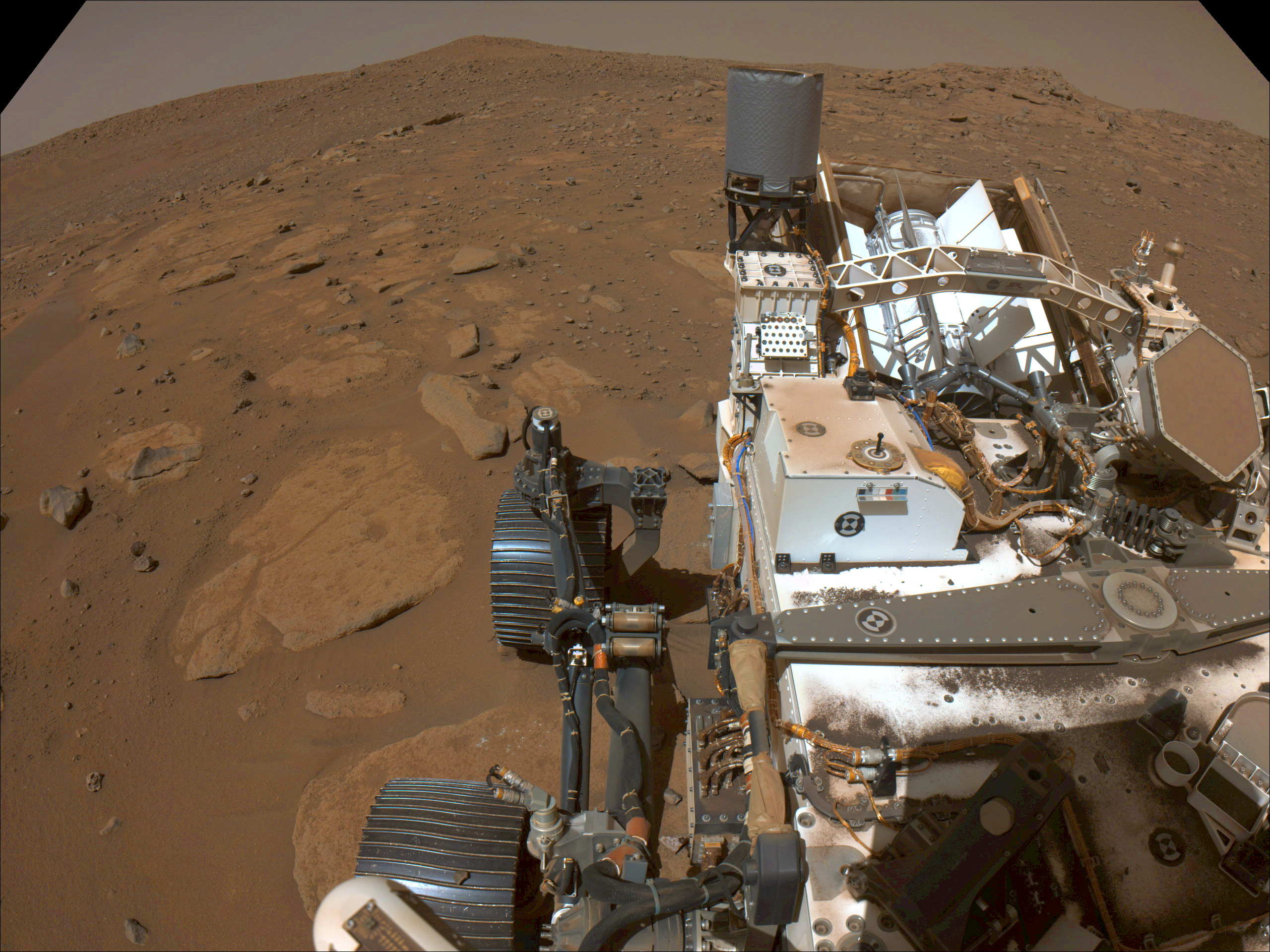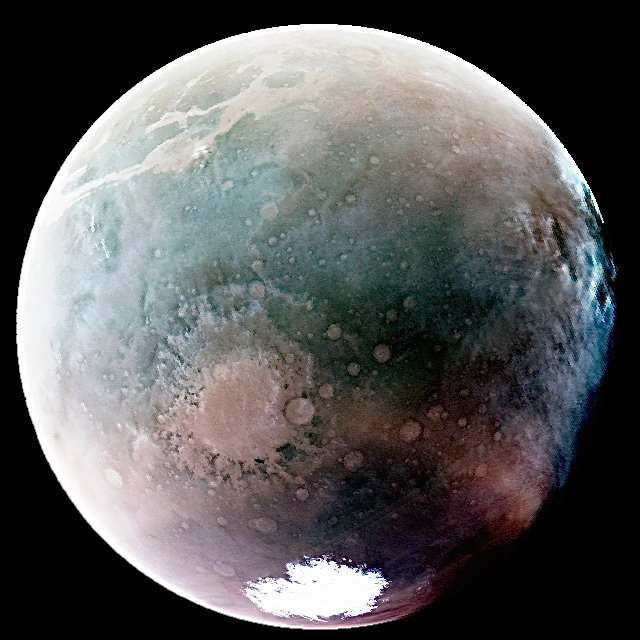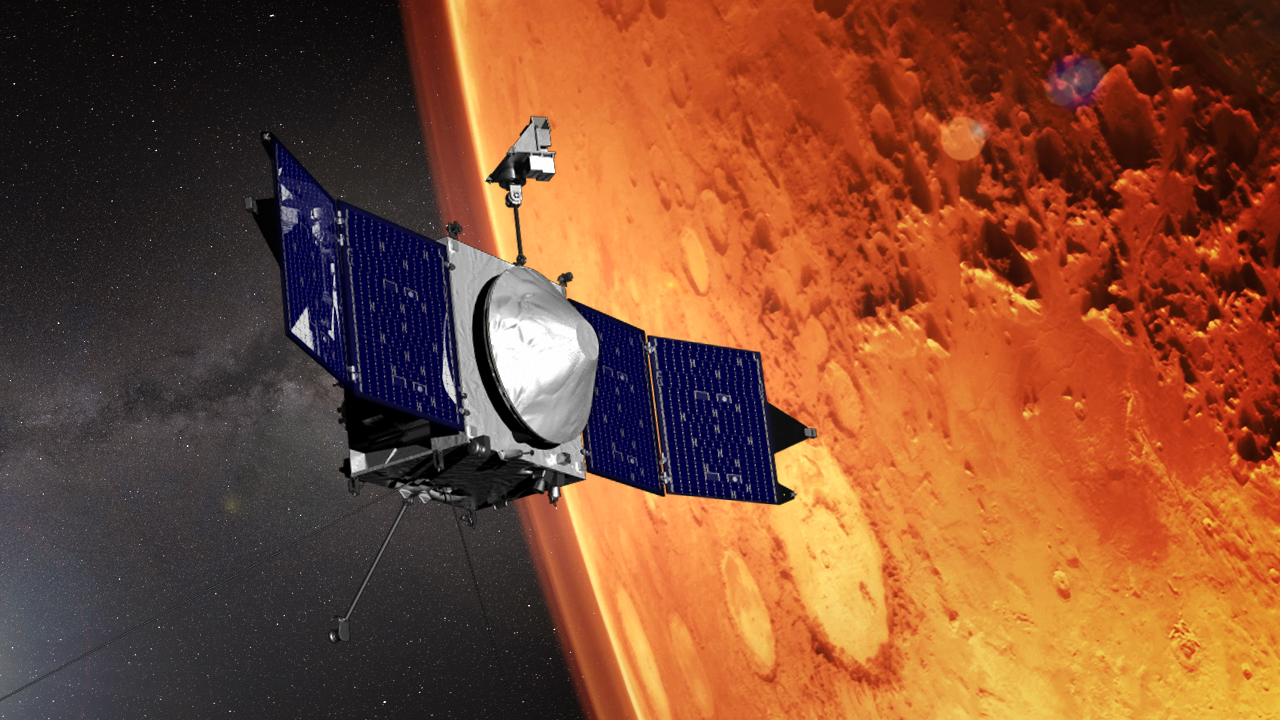MAVEN
The Mars Atmosphere and Volatile EvolutioN (MAVEN) mission is the first mission devoted to understanding the Martian upper atmosphere.
active Mission
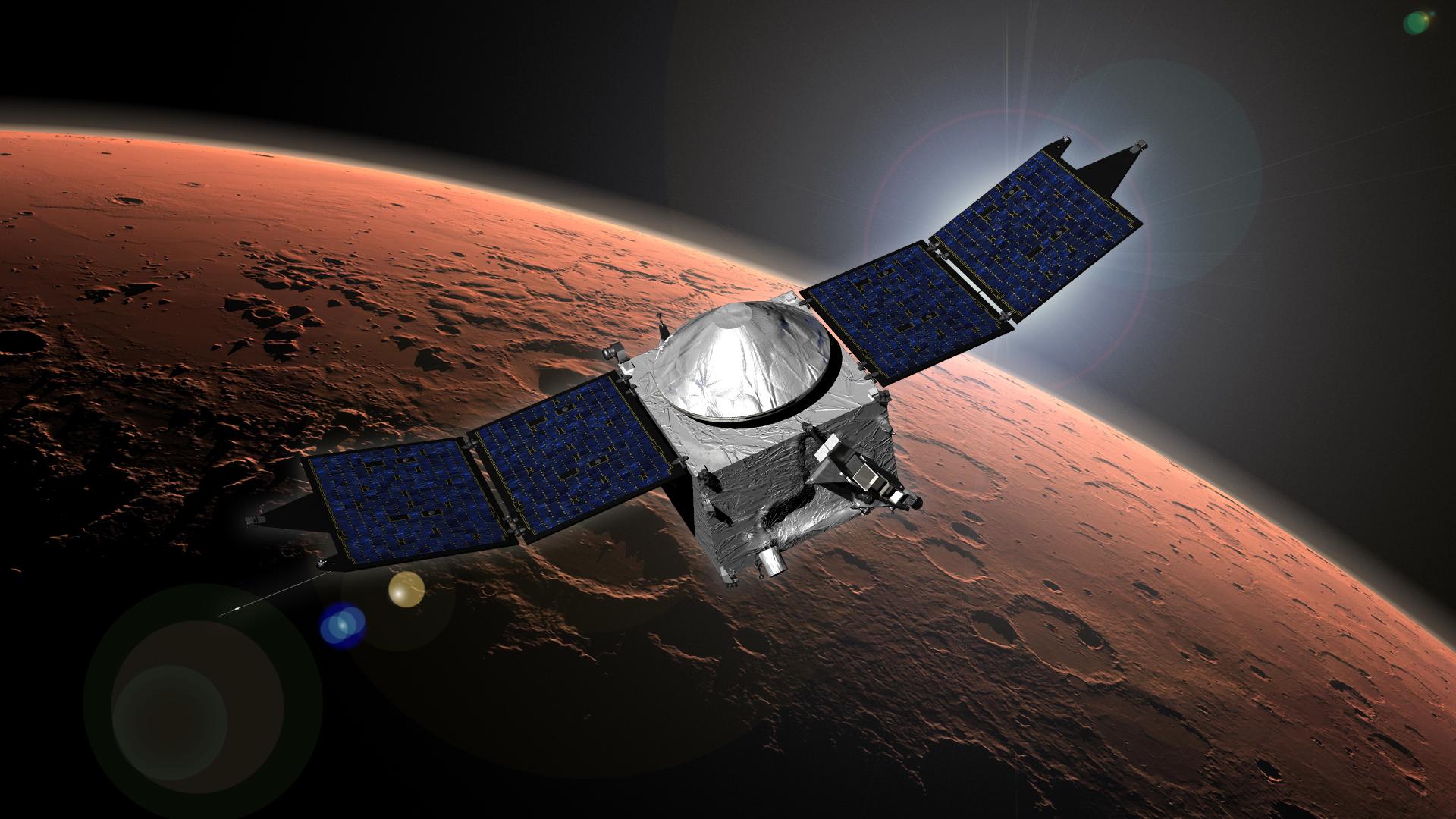
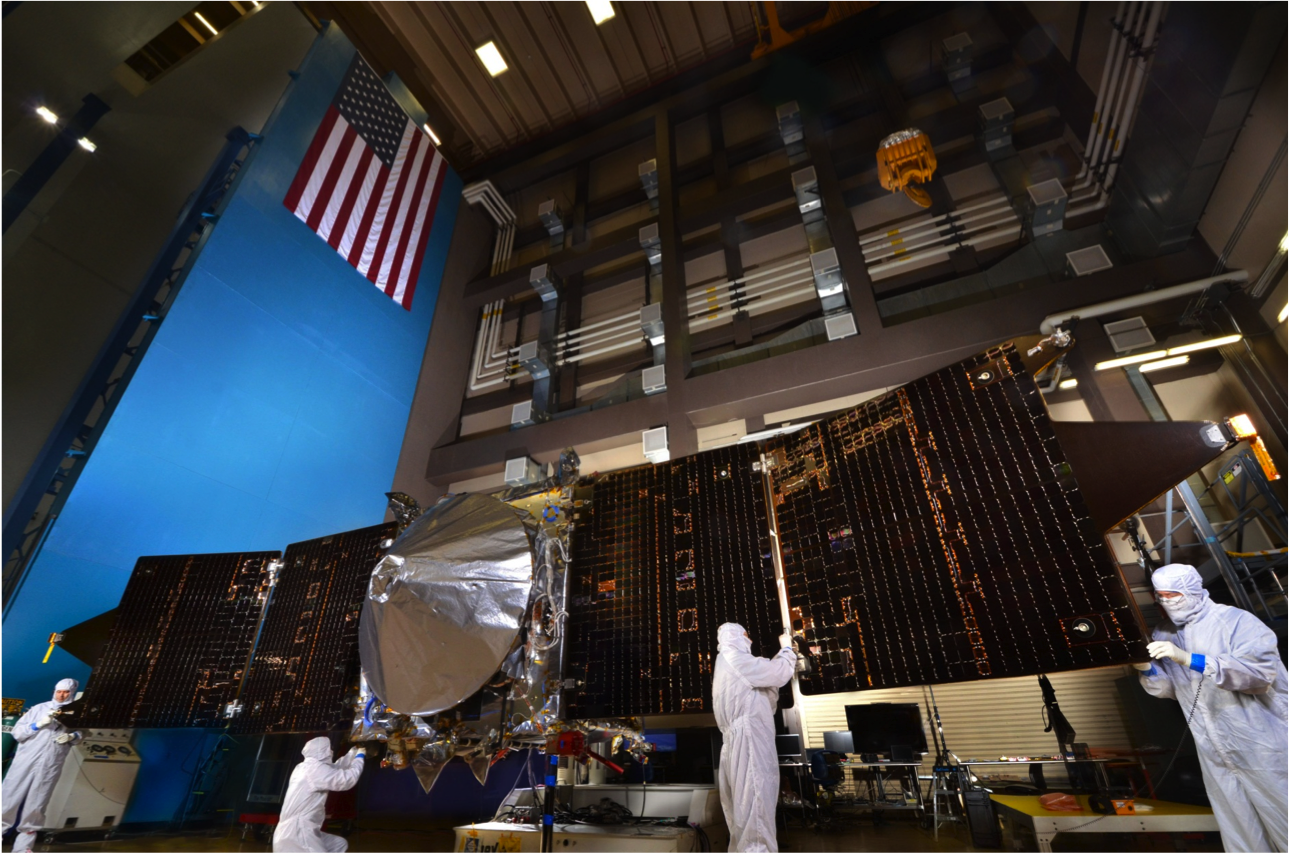
MAVEN with deployed solar arrays.
Lockheed Martin
Key Facts | |
|---|---|
Launch | Nov. 18, 2013 |
Launch Location | Cape Canaveral Air Force Station, Florida |
Launch Vehicle | Atlas V01 |
Mars Orbit Insertion | Sept. 21, 2014 |
Length | 37.5 feet (11.4 meters) |
Width | 90 inches (2.29 meters) |
Height | 11.4 feet (3.47 meters) |
Mass | Dry (unfueled) mass at launch: 1,784 pounds (809 kilograms) Wet (fueled with hydrazine) mass at launch: 5,410 pounds (2,454 kilograms) Science payload: 143 pounds (65 kilograms) in eight instruments |
Power | More than 2,000 solar cells on four panels cover 129 square feet (12m2) and generate between 1,150 and 1,700 watts (depending on spacecraft’s position in Mars orbit); solar panels power two 55-amp-hour lithium ion batteries. |
High-gain Antenna | 6.56 feet (2 meters) in diameter |
Communications | 14 pounds (6.5 kilograms). Electra UHF communications package to provide data relay from rovers and landers on Mars back to Earth. |
Mission Duration | Ongoing |
Science
The goal of MAVEN is to determine the role that loss of atmospheric gas to space played in changing the Martian climate through time. Where did the atmosphere—and the water—go?

Ultraviolet Mars Reveals Cloud Formation: The ultraviolet colors of the planet have been rendered in false color, to show what we would see with ultraviolet-sensitive eyes. This images uses four MAVEN images to show about seven hours of Mars rotation during this period, and interleaves simulated views that would be seen between the four images.
NASA/MAVEN/University of Colorado
Keep Exploring

